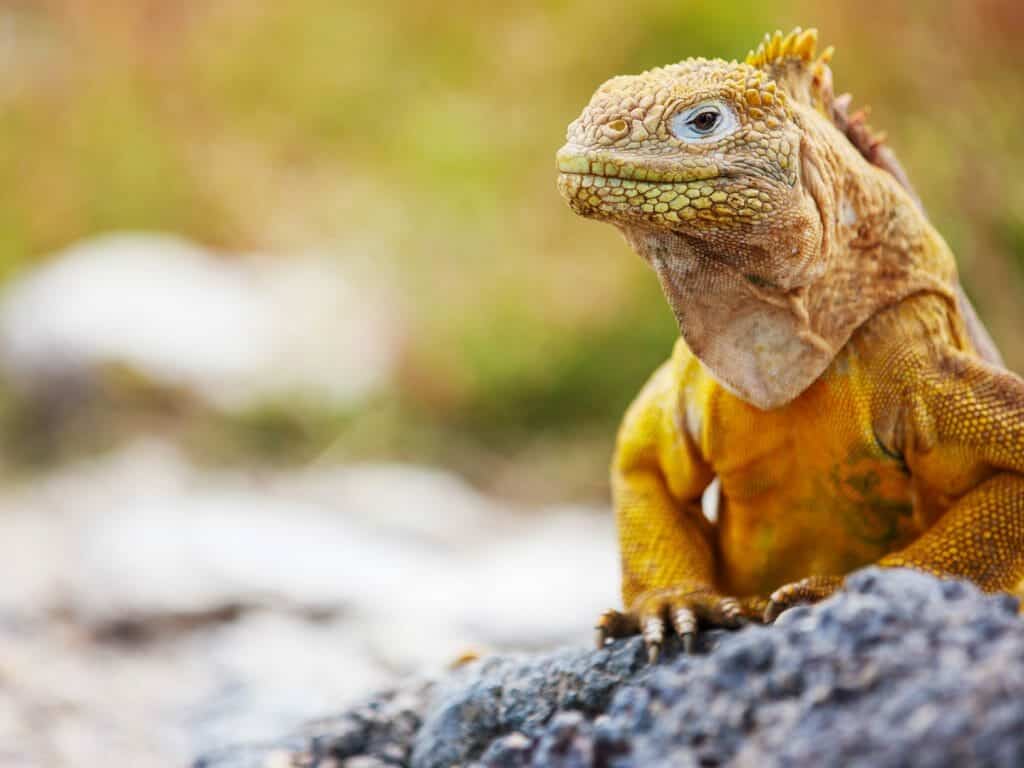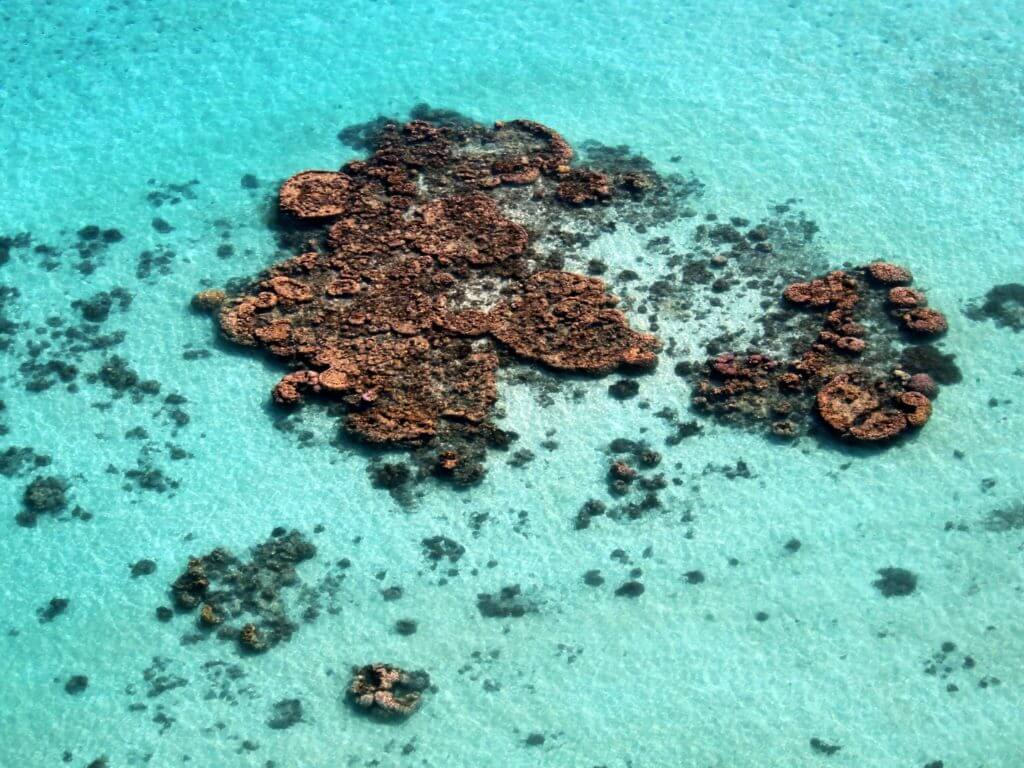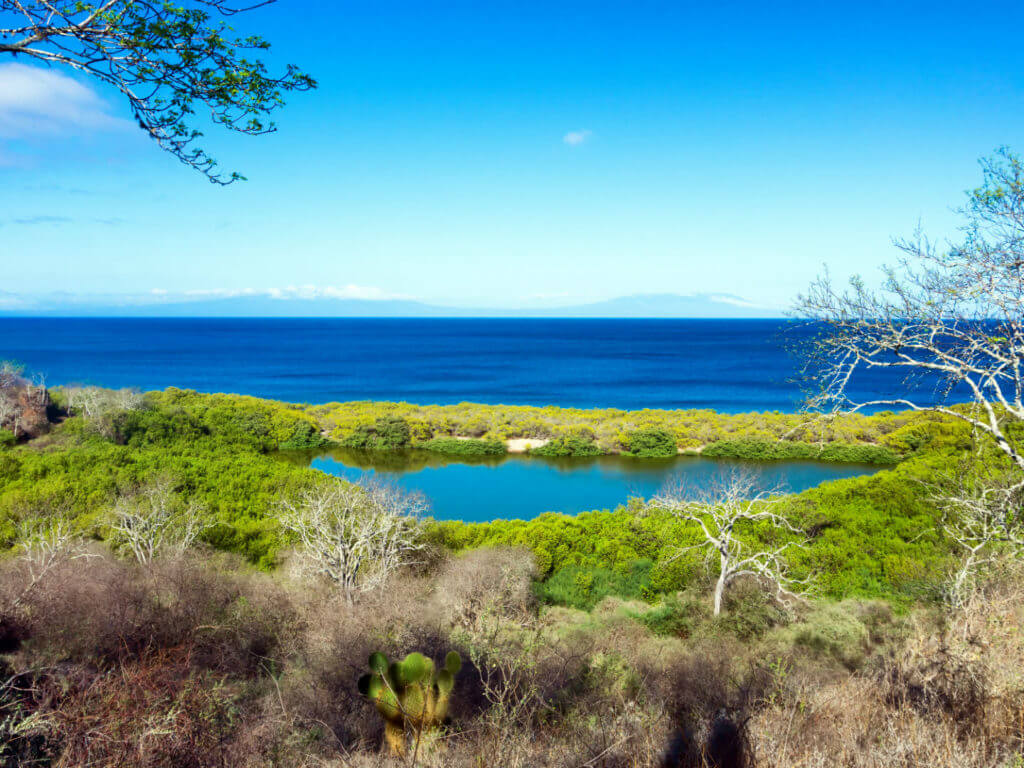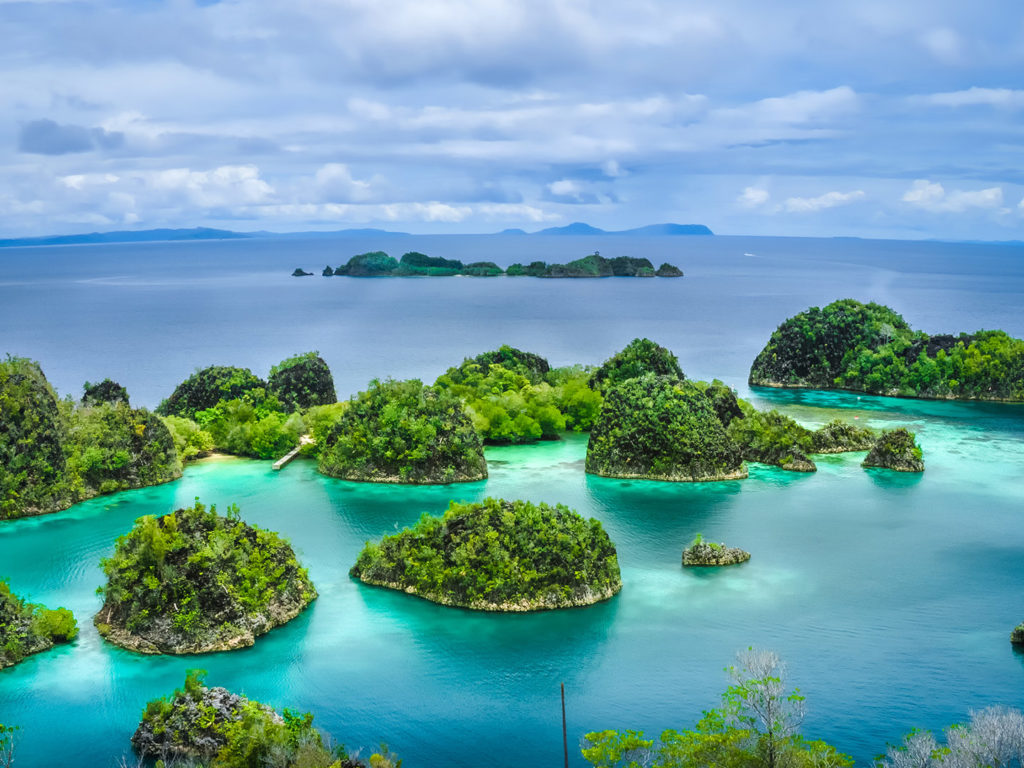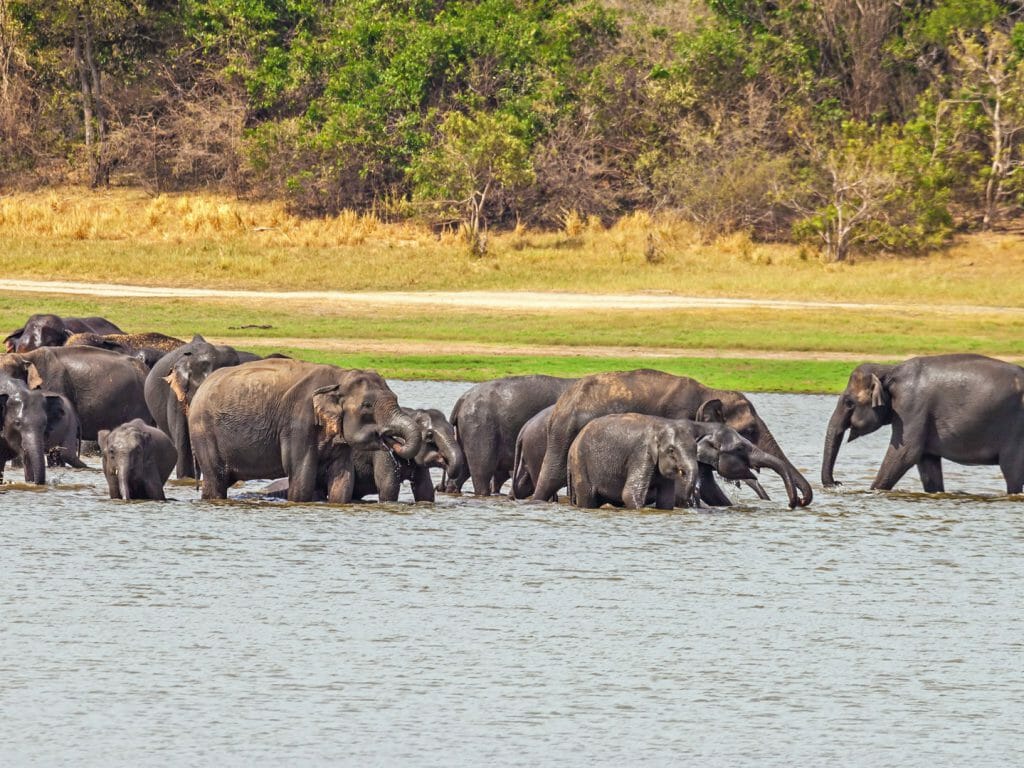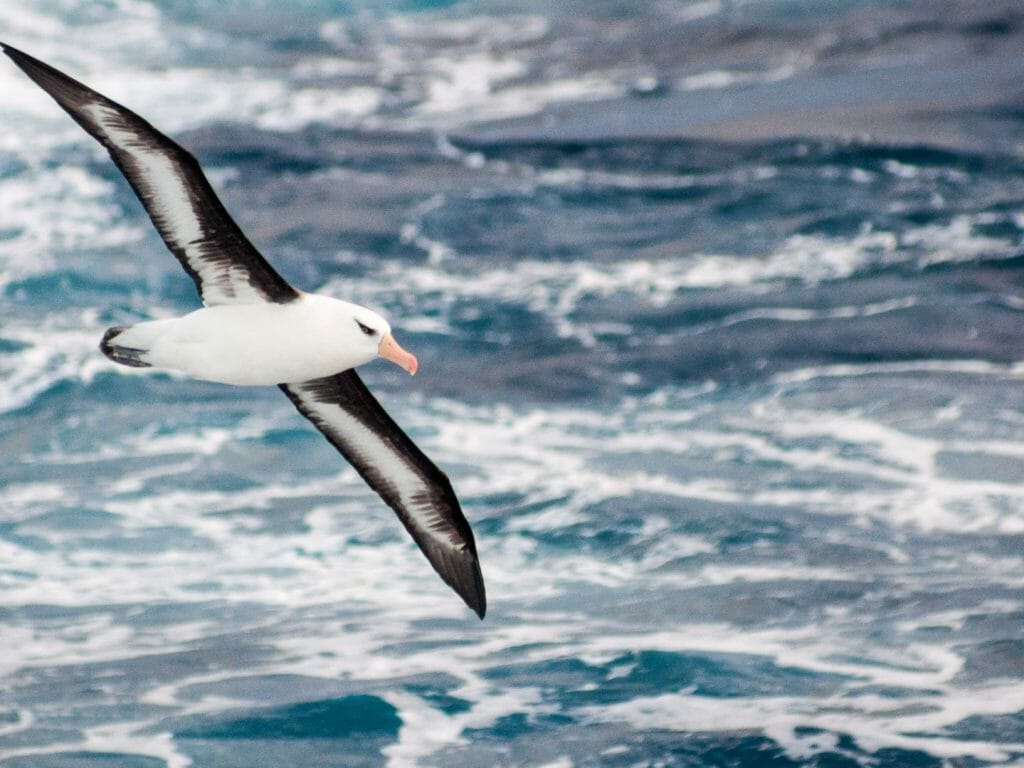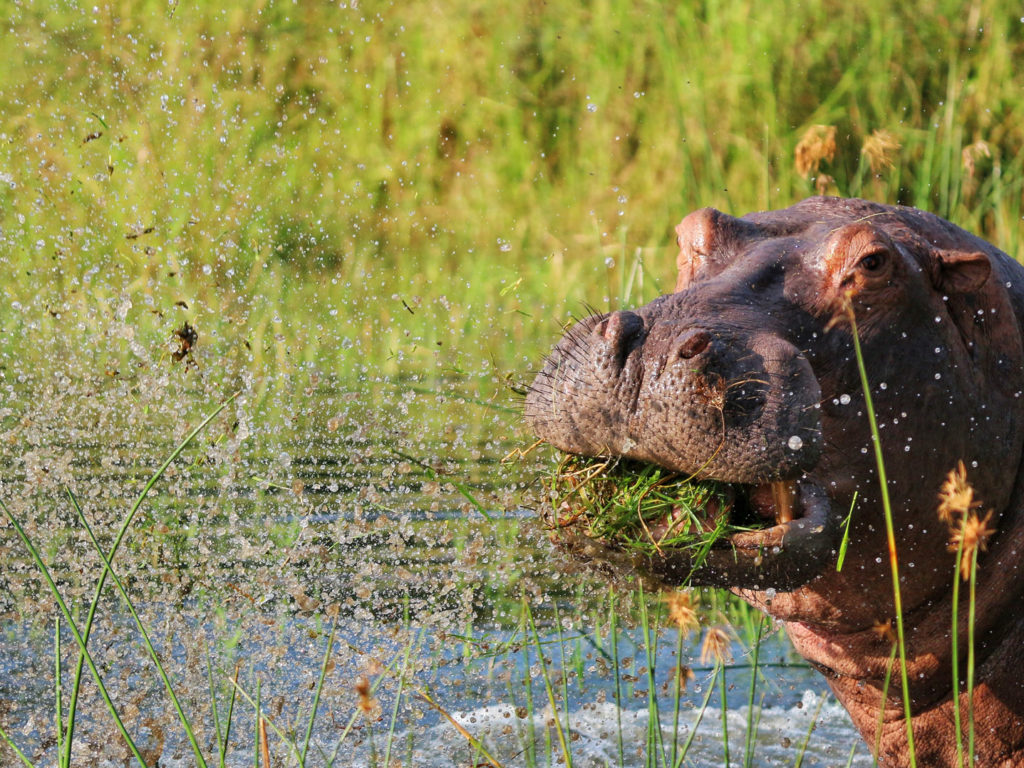This article is an excerpt from our new Traveller magazine – please get in touch with us to receive your free copy.
I was not a repeat rule-breaker as a child. The closest I came to expressing my anarchic side was in junior school, when I set the timers on around 20 school-issue alarm clocks so that they would all go off during a parent-teacher meeting. Hardly James Dean.
Instead, I used to hang out with the wilder kids and get my thrills vicariously through their detention-earning adventures, as well as through the punk music that turned the world upside-down in the late seventies and early eighties.
Scroll forward 40 years and my world has been civilised – job, mortgage and marriage. I’ve now become one of those bores that we used to kick against.
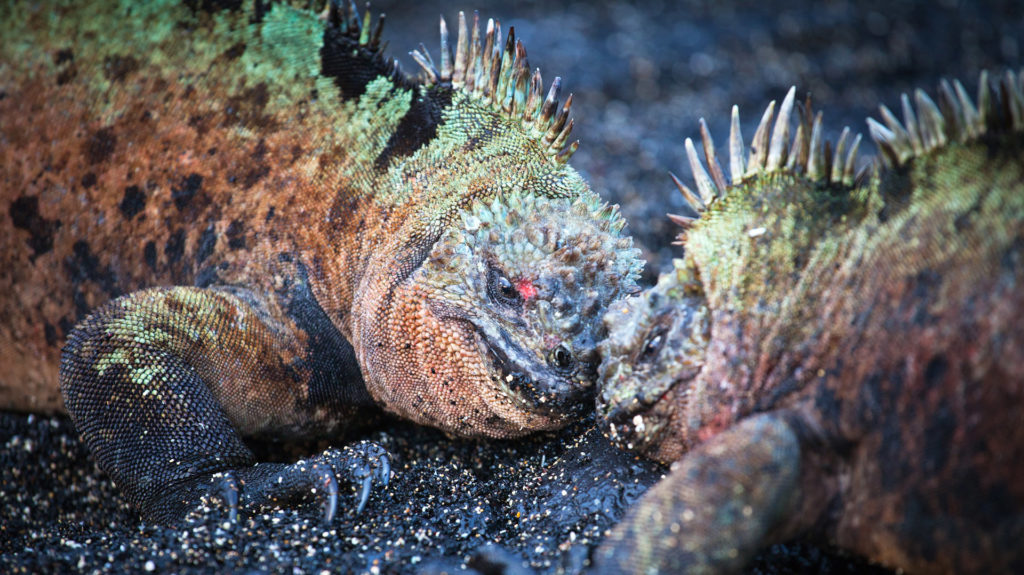
However – and yes, I’m finally getting to the point – I’m currently in the Galapagos and Ecuador’s wild and untamed wonderland of raw nature. This geological conveyor belt of islands rose from the Pacific in a flourish of volcanic fireworks, before being tectonically dragged into crumbling submersion over the course of 10 million years and a couple of hundred kilometres.
It’s a distant 13 years since my last visit; albeit a geological nanosecond.
I’ve changed. The islands and wildlife have not.
Despite years of travel in the interim, including many outstanding wildlife experiences, I find myself taken aback and even more surprised this time by the variety of life that is scattered throughout the islands and how unaffected it is by our presence.
A great deal has been written about man’s interaction with this isolated archipelago of islands, from unverified reports of early indigenous occupation to its discovery by Tomas de Berlanga (Bishop of Panama) in 1535. Pirates and whalers followed during the seventeenth and eighteenth centuries, before the seminal arrival of Mr Darwin in 1835.
A dawning awareness of the natural value of the Galapagos Islands resulted in the establishing of the first sanctuaries in 1934, the creation of a national park in 1959 (that covered 97% of the archipelago) and a marine reserve in 1986 that has expanded to become one of the world’s largest.
In the 21st century, conservation bodies are facing a huge struggle to protect the Galapagos Islands from global threats of pollution, plastics, climate change and invasive species. This accompanies a delicate balancing act of allowing access to tourists while limiting their impact on the natural order.
Consequently, there are rules. Strict rules of conduct apply to all visitors to the islands and your guide is charged with enforcing them.
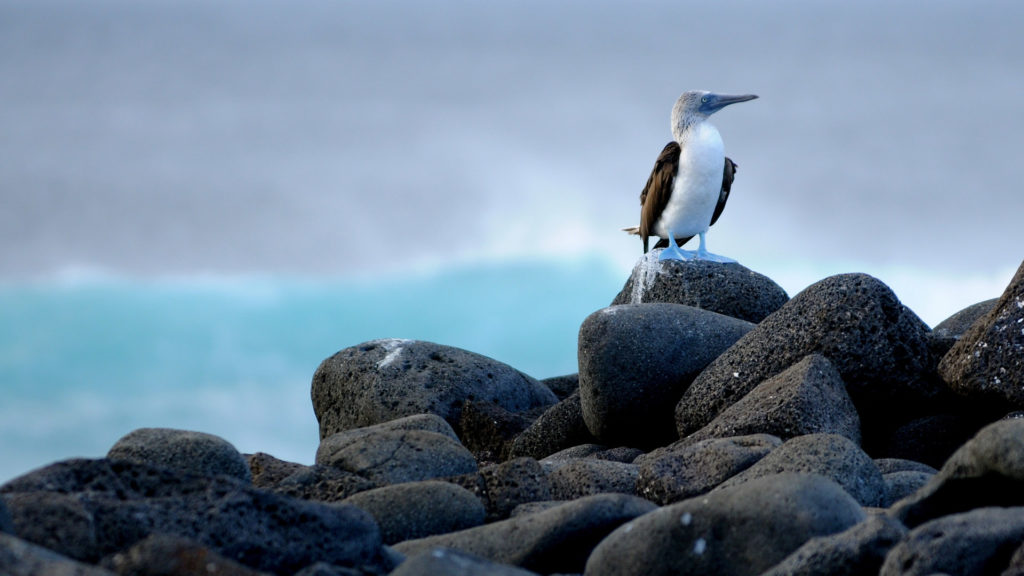
Two of the key requirements are that you stick to the paths and stay at least six feet away from wildlife. Both are a challenge – not because they limit your experience, but because the wildlife refuses to obey and consistently flouts the rules. Marine iguanas blockade paths, boobies nest where they see fit and sea lions persistently invade your personal snorkelling space.
Far from being the highly-managed and restrictive experience that the regulations suggest, a visit to the Galapagos Islands is one of the most liberating and engaging nature experiences on our planet. Here, you aren’t a tourist as much as a temporary part of the whole ecosystem, which is why playing your part in conserving the islands is paramount.
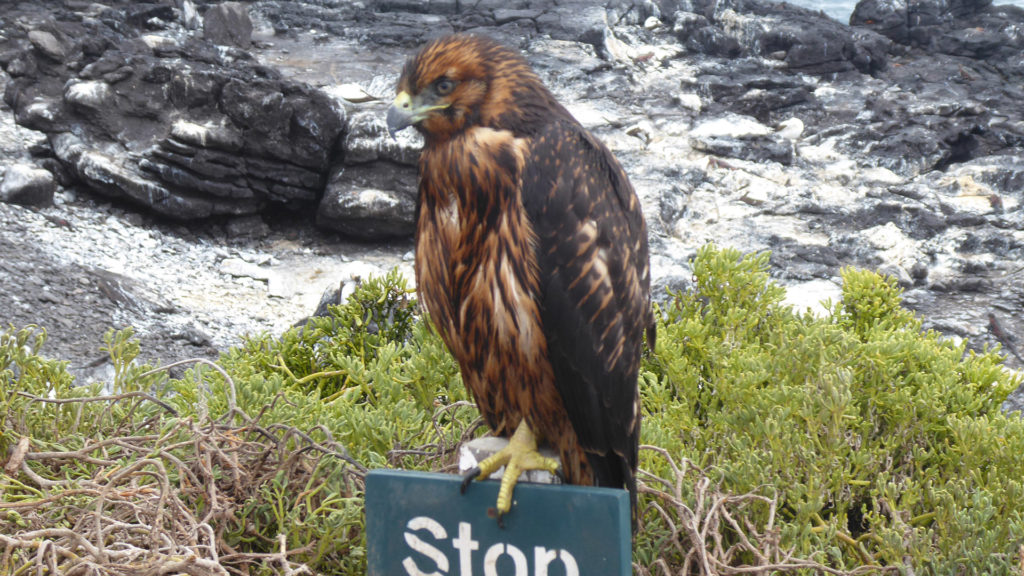
It was while visiting Espanola Island and on a windswept walk to Suarez Point that I had a brush with the leader of the archipelago’s Wild Bunch, the Galapagos hawk. This elusive apex predator was louchely hanging out on a stop sign that was intended to deter hikers from tumbling off a coastal cliff bluff.
As my small group gathered around (religiously respecting the six-foot rule), the hawk remained nonchalant, disinterested and almost disdainful of these acolytes who were obviously convening to pay respect to the feathered ‘God of the Galapagos’. The hawk was a large and cocky juvenile that knew no fear, and it was interrogating and subjugating us with its shockingly-intense stare.
Then it struck me – the Galapagos hawk is the Johnny Rotten of the islands and we were replaying that famous 1976 Bill Grundy interview with the Sex Pistols. Never mind the boobies, here’s the Galapagos hawk!
On the Origin of Species was considered heretical when first published, as Darwin dared to hypothesise a new world order. We now live in an age of information and understanding where everyone can be a budding naturalist and can scientifically explain the world around them and their place in it.
I’m fascinated by the science, biology and behaviour of the animal kingdom, but I am equally inspired by a perceived beauty, ugliness, grace and brutality. My fantasy Galapagos Islands cruise companions would include Henry Williamson, Beatrix Potter, Jack London, Richard Adams, George Orwell, Kenneth Grahame and Roald Dahl. Can you imagine the flights of fancy that would ensue?
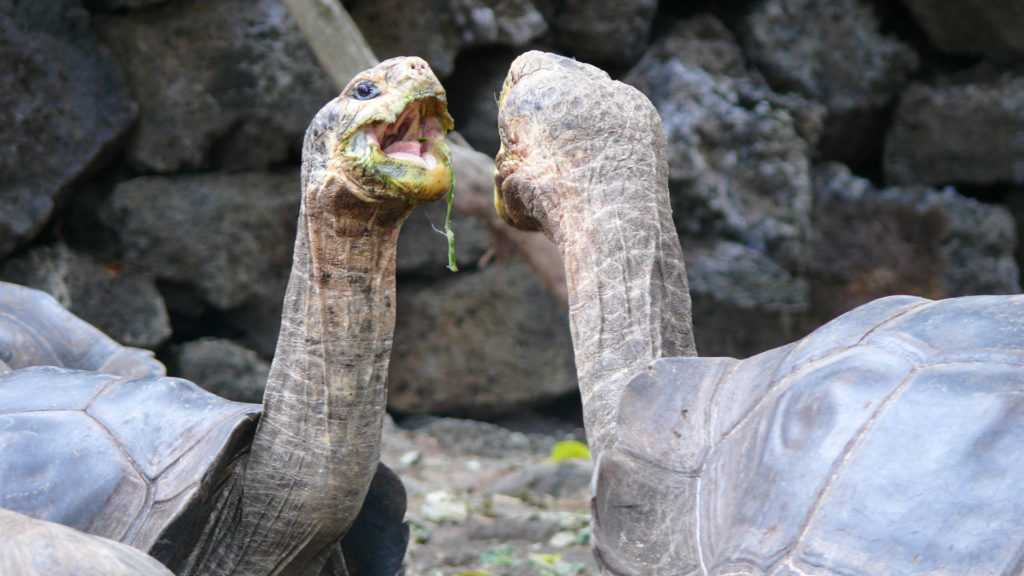
Of course, the science of the Galapagos Islands is astonishing and to visit is an intensely educational experience. But don’t let yourself be told that this is the only world view, and occasionally let your imagination take the driving seat. Anthropomorphising is fun and there is a story waiting to be told about every one of these charismatic species.
If you choose to visit the Galapagos Islands, then do stick to the paths, listen to your guides, learn about the remarkable natural world into which you have just been immersed. But try breaking just a few of the rules regarding how we perceive and understand this magical world where five-metre-long manta rays glide past, sea lions blow bubbles in your face, sea birds have red and blue feet and punky Galapagos hawks scowl at the square tourists.


